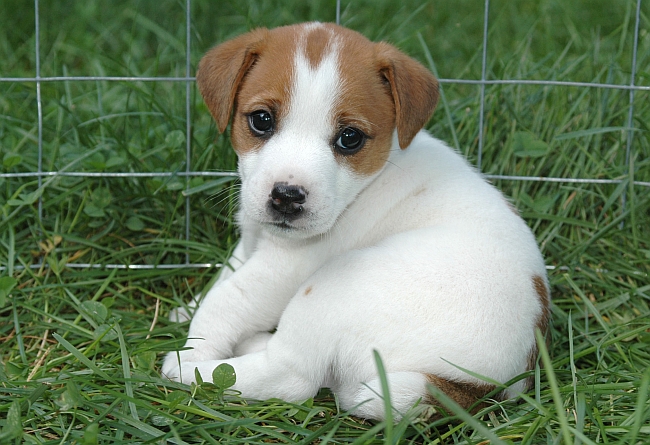
In the world of pet care, crate training is an often disputed subject among trainers. The use of crates functions as a protective travel tool for animals who frequently accompany their owners on trips and vacations. Crates also are used for house training young pets when their owner goes to work or is unable to supervise the pet. However, one of the reasons why employing the use of crates is controversial is due to the cramped space and cage-like appearance. While we do believe in the merits of crate training, there are possible alternatives for dog owners to maintain good boundaries in the home while they are away, without keeping their pets cooped up in a tiny space all day.
Types of Pens and Gates
Setting up a pen in the home will provide enough room for the dog to walk around, access food and water, and even eliminate in a designated area without being trapped sitting in a small crate. Below are the primary kinds of pet pens available, as well as which circumstances would require a specific type of pen.
- Mounted Gates. The mounted gate works well with upper-level homes, or those with basements, or balconies. There are two kinds of mounted gates, pressure-secured gates and hardware mounted gates. Pressure mounted gates are easy to install, requiring no tools, and can be transported from room to room, fitting in the front door, and at the top of a staircase. They work well for people who have small children, or dogs that are neither very big nor determined to escape. These are the perfect solution for blocking pets from off-limits areas, and for temporary uses. Hardware mounted gates take more effort (and tools) to manually install in either a door frame or at a staircase. However, they are much sturdier than pressure mounted gates, and are built to hold against any jumping, pawing, or scratching your pet can initiate. If there is a specific area of the home which you may permanently want blocked off from your dog, then this is a great option, especially if the pet is a larger breed known for jumping or trying to get out.
- Free-Standing Gates: The free-standing pet gate is a mobile option that helps partition a room into a blacked-off area. The pen generally has 3-5 small walls which are fastened to each other, and may be stacked up and stored. Other free-standing gates resemble walls with ground support so that they may stand alone. This kind of makeshift boundary is perfect for small or medium sized animals that do not jump up and knock over obstacles often. These are another good temporary option for rooms with wider door frames (such as double door) or open spaces that may not have the right wall support for a wider pressure mounted gate. Note: Since these can be easily tipped to one side, they are best for very young or very small animals, and are not appropriate blockades for dangerous areas such as balconies and staircases.
- Exercise Pens: These are most frequently used to provide the dog room to move around a limited area, without forcing him to stay in a crate. This would be a suitable option for people who are gone for long hours of the day, but do not prefer to leave their pet with full reign over the house or backyard. Exercise pens can allow for a place to sleep (such as a crate), food and water bowls, a patch for eliminating, as well as enough space to move about and stretch their legs. This type of pen works well for multiple dogs, or for new litters of puppies to stay in a safe, confined area with their mom. They fit well both indoors, or to designate a large area of the backyard outside where the pup can romp and play without tearing up flower beds, scratching tree trucks or urinating on new plants. If your dog is injured, is drying off after his bath, and you want him to have a safe, clean place will still being able to move around as needed, an exercise pen would be a helpful tool.
Materials
These are the primary materials used for animal gates and pens. Here are some reasons why you might favor one kind of material over another:
- Mesh: This is lightweight, and often can be easily rolled up and stored away. They are not typically recommended for dogs that are teething or are aggressive chew-prone adults.
- Wood: This is an all-natural option that is both durable and may match better with furniture.
- Metal: Though metal is heavier to construct and transport, there is no question about the long-lasting durability metal gates and crates possess. They are chew-proof, difficult to knock over, and challenging to escape from when they are set up correctly.
- Plastic: One of the less-expensive options, plastic gates provide a quick light-weight solution if the issue might be a temporary one. If the dog is small, not a determined chewer, and not strong enough to push a gate over, plastic is a great choice.

